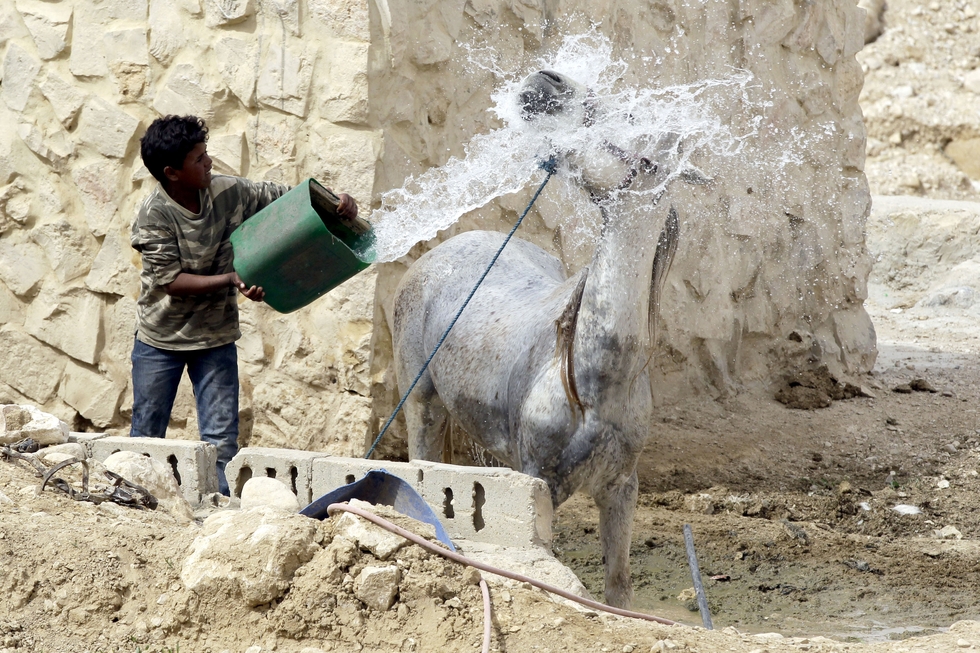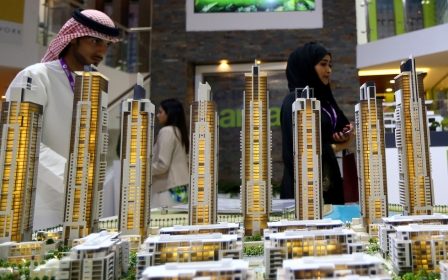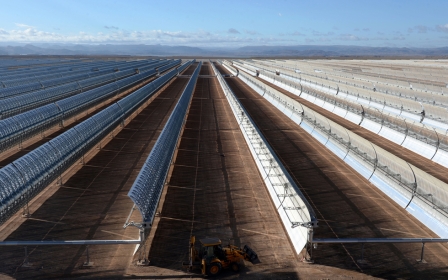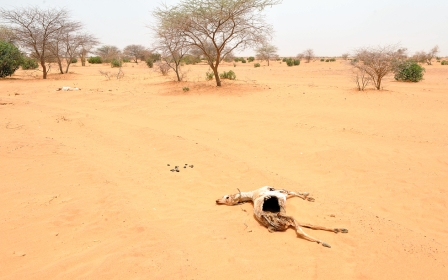High temperatures will make much of Middle East, North Africa unlivable

Countries across the Middle East have been generally dismissive of the idea of climate change. In particular, the oil producing Gulf states – led by Saudi Arabia – have sought to slow any move towards a global agreement on limiting carbon emissions.
Now researchers at Germany’s Max Planck Institute, considered one of the world’s leading centres in climate related analysis, say it is these countries which will suffer most from global warming, with a combination of soaring summertime temperatures, increased humidity and prolonged dust storms over coming years making them virtually uninhabitable.
“Climate change will significantly worsen the living conditions in the Middle East and in North Africa,” says Professor Jos Lelieveld, one of the lead authors of the research.
“In future, the climate in large parts of the Middle East and North Africa could change in such a manner that the very existence of its inhabitants is in jeopardy.”
The research by Lelieveld and others gives rise to an unedifying image of a baked, dust-ridden region where any activity outdoors will be virtually impossible for much of the year by mid-century.
For many, migration – to northern Europe or to the US - will be the only option.
At the latest international conference on climate change in Paris late last year, nations of the world agreed to try to limit average global temperatures to an increase of 2C above pre industrial levels by 2050 in order to head off catastrophic climate change.
Even if that goal is met – and it’s a very big "if" given present levels of emissions and global temperature projections – the duration of heat waves across the region is likely to be dramatically prolonged.
Days of 46C will occur five times more often than was the case at the turn of this century. By 2050, the number of summer days with peak temperatures – perhaps up to 50C – will double to about 80 days per year. Meanwhile the barometer is unlikely to drop below 30 degrees at night.
Plus 40C days will become the norm rather than the exception.
“If mankind continues to release carbon dioxide as it does now, people living in the Middle East and North Africa will have to expect about 200 unusually hot days (per year) according to the model projections,” says Panos Hadjinicolau, also involved in the research.
Other studies have found that levels of humidity and the incidence of dust storms across the region are set to rise, making any outdoor activity ever more dangerous to health.
One research project undertaken by the Max Planck Institute found that due to prolonged droughts and the drying out of soils, dust emissions have increased by up to 70 percent over Saudi Arabia, Iraq and Syria this century.
In a separate study, researchers at the Massachusetts Institute of Technology and Loyola Marymount University in Los Angeles examined the impact of increased humidity on human activity in the years ahead.
Regions where outside activity is likely to be most hazardous in future include the coastal plains along both sides of the Gulf, and the cities of Abu Dhabi, Dubai, Doha and Bandar Abbas plus the Yemen coast of the Red Sea.
In these locations, those people forced to work outside – to maintain air-conditioning or water systems or oversee ambulance or fire services – would be at severe risk.
Increases in temperature and humidity, allied with lower air quality due to more frequent dust storms, would also have a significant impact on the annual Hajj pilgrimage, with the elderly and frail particularly at risk.
“This necessary outdoor Muslim ritual is likely to become hazardous to human health, especially for the many elderly pilgrims when the Hajj occurs during the boreal summer,” say the researchers.
Increased investment in air-conditioning systems and desalination plants would be one way of coping with future heat waves: the trouble is that such systems are energy intensive and, by putting more emissions into the atmosphere, make the whole problem of global warming that much worse.
It is a grim picture of the not too distant future: those that can afford it might continue to live in their air-conditioned mansions. But then any journey outside, particularly in the summer months, would likely be full of hazards.
Time is running out to deal with what are likely to become issues of life and death.
- Kieran Cooke is a former foreign correspondent for both the BBC and the Financial Times, and continues to contribute to the BBC and a wide range of international newspapers and radio networks.
The views expressed in this article belong to the author and do not necessarily reflect the editorial policy of Middle East Eye.
Photo: A boy cools a horse down with fresh water at the ancient city of Petra in Jordan on 25 March, 2015 (AFP).
New MEE newsletter: Jerusalem Dispatch
Sign up to get the latest insights and analysis on Israel-Palestine, alongside Turkey Unpacked and other MEE newsletters
Middle East Eye delivers independent and unrivalled coverage and analysis of the Middle East, North Africa and beyond. To learn more about republishing this content and the associated fees, please fill out this form. More about MEE can be found here.





